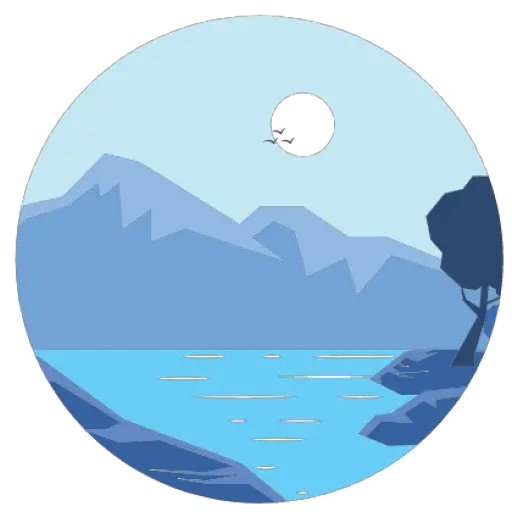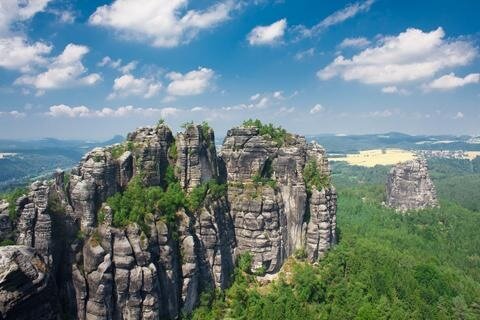To visit the bizarre yet breathtaking mountain range that is Saxon Switzerland is like being transported to another world. There is an inherent gothic atmosphere derived from the vast sandstone pinnacles that dwarf the trees and houses below, and the intrigue of the castles, caves, gorges and forests peppered between them causes your imagination to run amok.
Also known as the Elbe Sandstone Mountains, they were formed by volcanic eruptions that forced up the bed of a prehistoric lake. The River Elbe and its tributaries then cut the resulting chalky, sandstone bed into the pinnacles, mesas and rock buttresses that you see today. Standing relatively undiscovered until fairly recently, this natural adventure playground is now a Mecca for outdoor enthusiasts.
The hundreds of miles of cycling routes, paths and trails that Saxon Switzerland has to offer allows for all ages and abilities to explore and marvel the wonder of this place. For those that prefer to keep their feet firmly on solid ground, there are romantic fortresses, pretty villages, old mills and historical inns dotted along well-marked trails and paths to admire.
For the more judiciously challenged, there is the option to ‘free’ climb some of the 1000 towers. Free climbing means that no aids are allowed; only traditional tools like slings and ropes are permitted, but tools made of metal are not – this is to protect the soft sandstone and avoid unnatural destruction and altering of the rock surface.
For those who prefer things that are a little less ‘invigorating’, there is always the steady but rather creaky ride on the Kirnitzschtalbahn, a narrow-gauge tram dating back to 1898. It crawls along the River Kirnitzsch, from Bad Schandau, past romantic stone bridges and the occasional ancient mill, all the way to Lichtenhainer Wasserfall. Here you will find an historical inn where visitors can order fresh trout or venison, when in season, and indulge in a glass of Radeberger beer: the most popular Saxon brand.
Saxony’s capital city, Dresden, just a few kilometres from the Elbe Sandstone Mountains, is a great place to stock up on some culture. Claiming to be one of the greenest cities in Europe, with 63% made up of green areas and forest, Dresden has much history and many sites to see. Zwinger Palace, Frauenkirche (the reconstructed Church of Our Lady), and Semper, one of the most beautiful opera houses in the world, are just a few examples.
The mountain range – that lies across the border between Germany and the Czech Republic, and has been declared a national park by both countries – has an unusual microclimate that affects its wildlife and makes it a very unique place to experience. The gorges and valley floors have a cool, moist climate whilst the mountain range sustains a warmer, dryer climate. This literally turns the flora and fauna upside down, with several plants and animals that you would normally find on a valley floor being in the mountains, and visa versa. It is not unusual to see creatures such as dippers, fire salamanders, otters and brown trout in the pristine rivers that wind seductively below the mountains. And in the dryer heathlands and soft pinewoods keep your eyes open for the Eurasian Pygmy-owl. The starling-sized owl is the smallest in Europe and nests in old woodpecker holes.
Saxon Switzerland is mostly about escape; about swinging your backpack over your shoulder and heading off into the unknown. It’s letting the fresh mountain air blow your worries away and the closeness of nature bring you back to earth.

